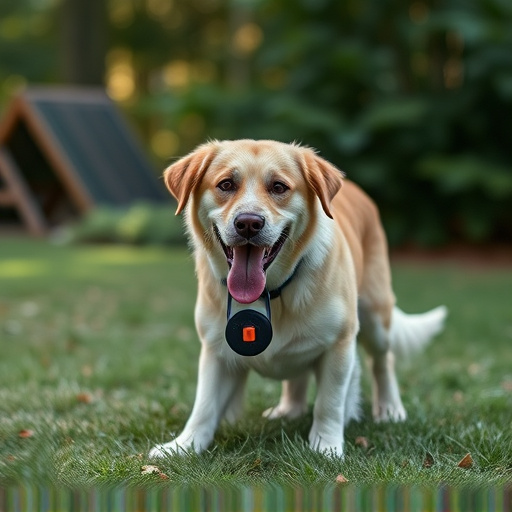Dog repellent devices with ultrasonic sounds, spray, or electric shocks within safe limits control dog access. Dog Repellent Device Compliance Testing rigorously assesses sound intensity, spray pattern, and shock levels to ensure safety and efficacy, protecting users, pets, and the environment. Distance control features create buffer zones using unpleasant stimuli for dogs, with adjustable settings for precise performance tailored to individual needs, backed by extensive trials meeting industry standards and regulatory requirements.
Introducing our comprehensive guide on dog repellent devices with distance control. In today’s urban environments, managing canine interactions is essential for safety and peace of mind. This article delves into understanding these innovative tools, highlighting their functionality and the crucial role compliance testing plays in ensuring effectiveness and user safety. We’ll explore key features, especially distance control, to help you choose a reliable dog repellent device that suits your needs. Learn how Compliance Testing is an integral part of selecting the best solution for a harmonious coexistence with our four-legged neighbors.
- Understanding Dog Repellent Devices and Their Functionality
- The Importance of Compliance Testing for Safety and Effectiveness
- Evaluating Distance Control Features: A Key Aspect of Repellent Performance
Understanding Dog Repellent Devices and Their Functionality
Dog repellent devices, also known as pet deterrents, are designed to keep dogs away from specific areas or objects by emitting various forms of stimuli. These can include ultrasonic sounds, spray, or electric shocks (within safe and approved limits). The key feature that sets these devices apart is their ability to control the distance at which they operate, ensuring a safe and effective repelling action.
Compliance testing for dog repellent devices is crucial to guarantee their safety and efficacy. Such tests evaluate the device’s performance within specified ranges, assessing factors like sound intensity (in decibels), spray pattern, and shock levels. This rigorous process ensures that products meet industry standards and regulations, providing peace of mind for users and preventing any potential harm to pets or people.
The Importance of Compliance Testing for Safety and Effectiveness
Dog repellent devices with distance control are designed to keep canines away from specific areas, offering a safe and effective alternative to traditional repellents. However, for such tools to be truly reliable, they must undergo rigorous Dog Repellent Device Compliance Testing. This testing is paramount to ensure both safety and effectiveness. It verifies that the device operates as intended, emitting signals within a controlled range to deter dogs without causing harm.
Compliance testing includes assessments of various factors, such as the device’s range accuracy, consistency of the repellent signal, and its impact on canine behavior. These tests are crucial in upholding industry standards and ensuring consumer safety. By subjecting dog repellents to extensive trials, manufacturers can guarantee their products meet regulatory requirements, providing peace of mind for users who rely on these devices to protect their property and pets.
Evaluating Distance Control Features: A Key Aspect of Repellent Performance
Evaluating distance control features is a crucial aspect of understanding a dog repellent device’s performance and effectiveness. These devices are designed to create a buffer zone by emitting ultrasonic sounds or other sensory stimuli that dogs find unpleasant, encouraging them to stay away from specific areas. The key to their success lies in the precision and range of this control. Repellent devices with advanced distance control mechanisms can detect and respond to an animal’s proximity, allowing users to set personalized boundaries.
During compliance testing, it’s essential to assess how well these features function under various conditions. This includes testing the device’s ability to activate at the right distance, ensuring it doesn’t trigger unnecessarily in the presence of humans or other non-target animals while maintaining effectiveness against dogs. The optimal range and sensitivity settings vary based on environmental factors, such as terrain, weather, and local dog populations, so adjustable controls offer a significant advantage, allowing users to tailor the repellent’s performance precisely to their needs.
Dog repellent devices with distance control offer a safe and effective solution for managing canine interactions. By understanding their functionality, undergoing compliance testing, and focusing on distance control features, individuals can select the ideal device to protect themselves and their property while adhering to relevant safety standards. This ensures that both people and dogs can coexist harmoniously, avoiding unwanted encounters at a comfortable distance.
